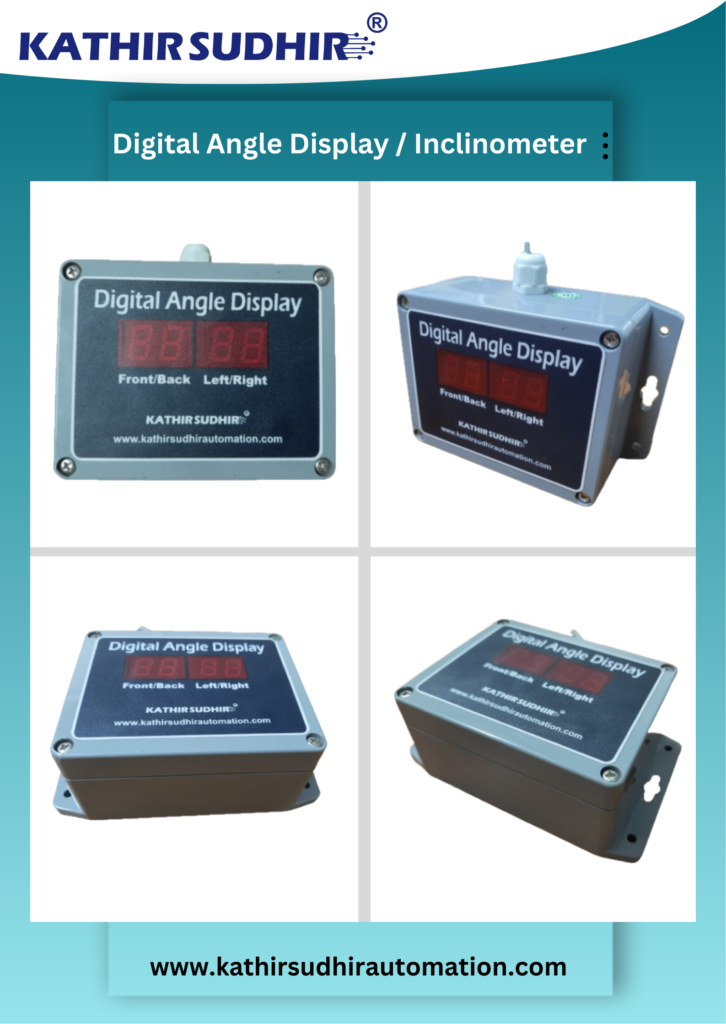Introduction: In the dynamic worlds of construction and architecture, precision is the cornerstone of success. Every degree and every angle can make a significant difference in the integrity and aesthetics of a structure. Enter the digital angle display, also known as an inclinometer – a powerful tool that revolutionizes the way angles are measured, ensuring accuracy, efficiency, and impeccable results. In this blog, we will explore how digital angle displays are shaping the landscape of construction and architecture, making complex tasks more manageable and contributing to the creation of stunning, well-crafted structures.
The Need for Precision: In the realm of construction and architecture, a fraction of a degree can lead to misalignments, structural weaknesses, and design flaws. Achieving the intended vision requires meticulous attention to detail and precise measurements. Digital angle displays offer a modern solution to this age-old challenge, providing real-time, accurate angle readings that empower professionals to execute their plans flawlessly.
Applications in Construction: Digital angle displays have found a multitude of applications in the construction industry. From ensuring the proper alignment of foundation walls and roof trusses to accurately positioning beams and columns, these devices streamline the construction process. Architects and engineers can confidently work on intricate designs, knowing that the angles are being measured with the utmost precision.
Architectural Marvels: Architects are constantly pushing the boundaries of creativity and design. Digital angle displays act as their trusted allies, assisting in creating iconic structures with intricate angles and complex geometries. Whether it’s the curvature of a modern skyscraper or the precise alignment of an ornate dome, these tools allow architects to translate their visions into reality.
Efficiency and Time Savings: In a fast-paced industry where time is money, digital angle displays significantly reduce the time spent on manual angle measurements. With instant and accurate readings, construction crews can make informed decisions quickly, minimizing delays and ensuring project timelines are met.
Quality Assurance: The quality and safety of a structure depend on proper alignment and accurate angles. Digital angle displays serve as quality assurance tools, verifying that every component is in its intended position. This leads to structurally sound buildings that stand the test of time.
Training and Skill Development: Digital angle displays also play a role in training the next generation of construction and architecture professionals. Aspiring architects, engineers, and builders can use these tools to learn about angles, measurements, and geometric principles, preparing them for the challenges of the industry.
Remote Monitoring and Collaboration: In the digital age, remote monitoring and collaboration are becoming increasingly important. Many digital angle displays offer wireless connectivity, allowing professionals to monitor and adjust angles from a distance. This feature is especially valuable for large construction sites and complex projects that require real-time coordination.

Conclusion: In the ever-evolving fields of construction and architecture, precision is paramount. Digital angle displays have emerged as indispensable tools, empowering professionals to achieve remarkable levels of accuracy and efficiency. From skyscrapers that touch the sky to intricate architectural wonders that captivate the eye, these devices are transforming visions into tangible reality. As technology continues to advance, the future holds even greater promise for digital angle displays, ensuring that the art and science of construction and architecture continue to reach new heights.
